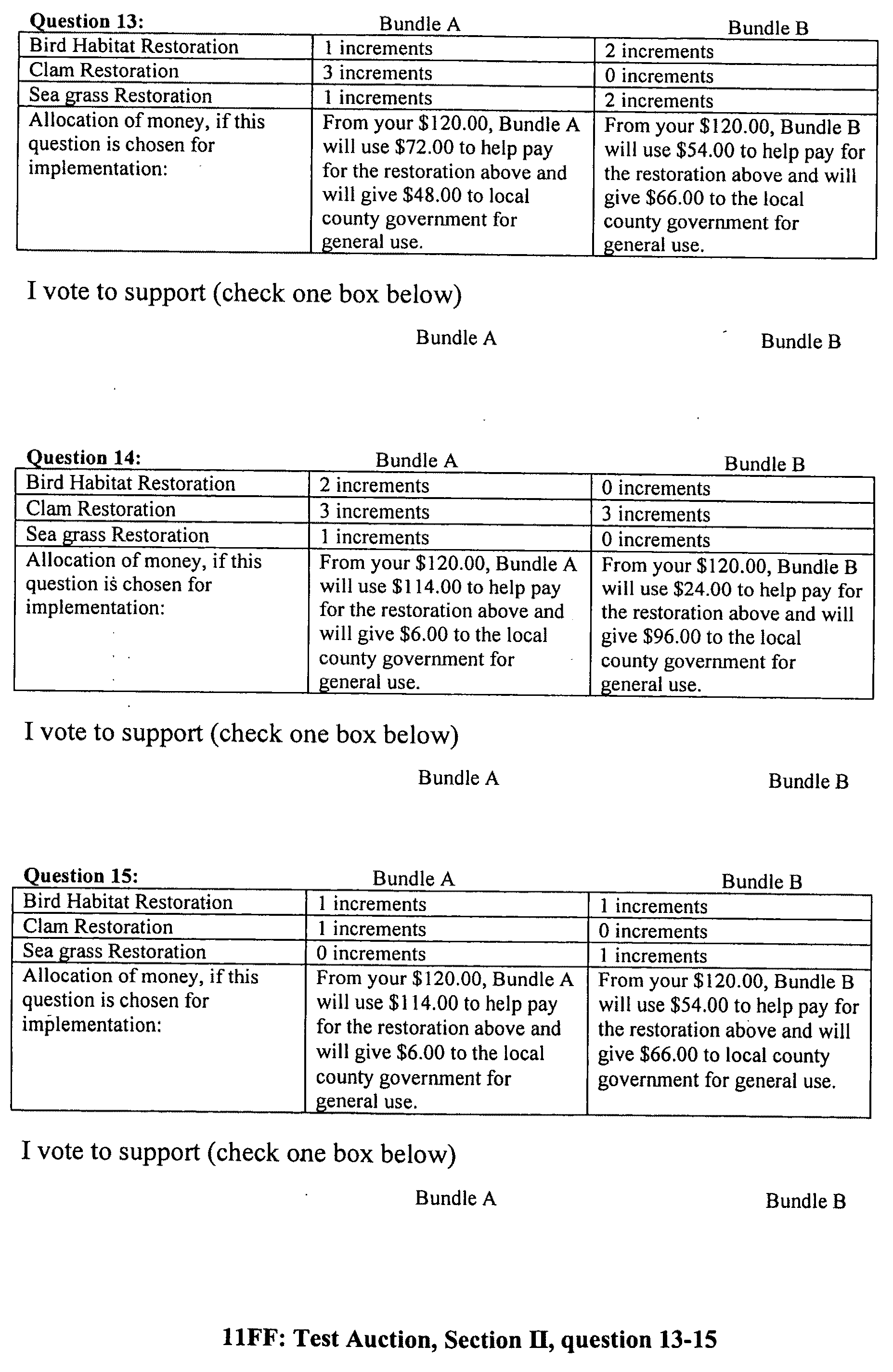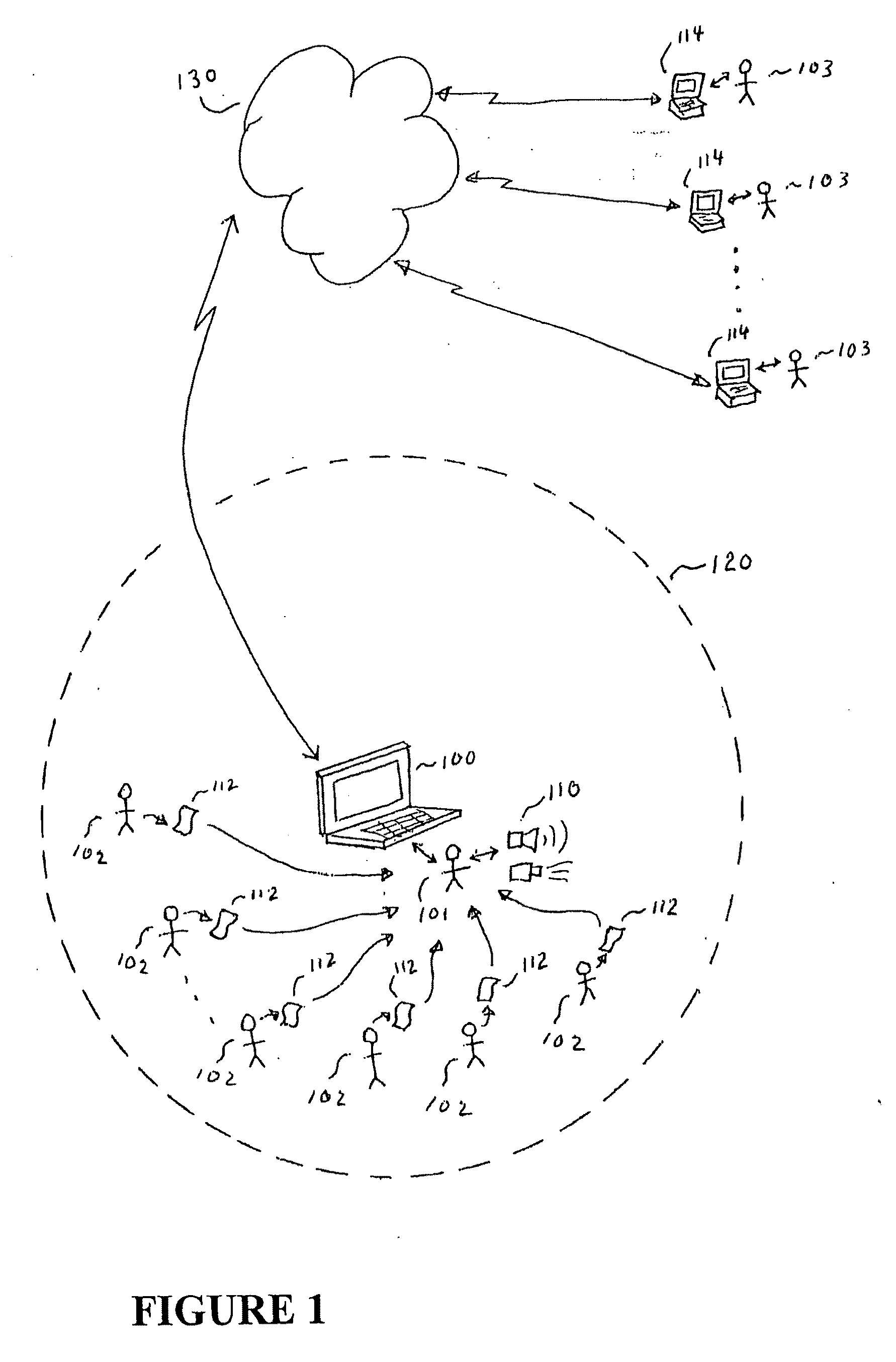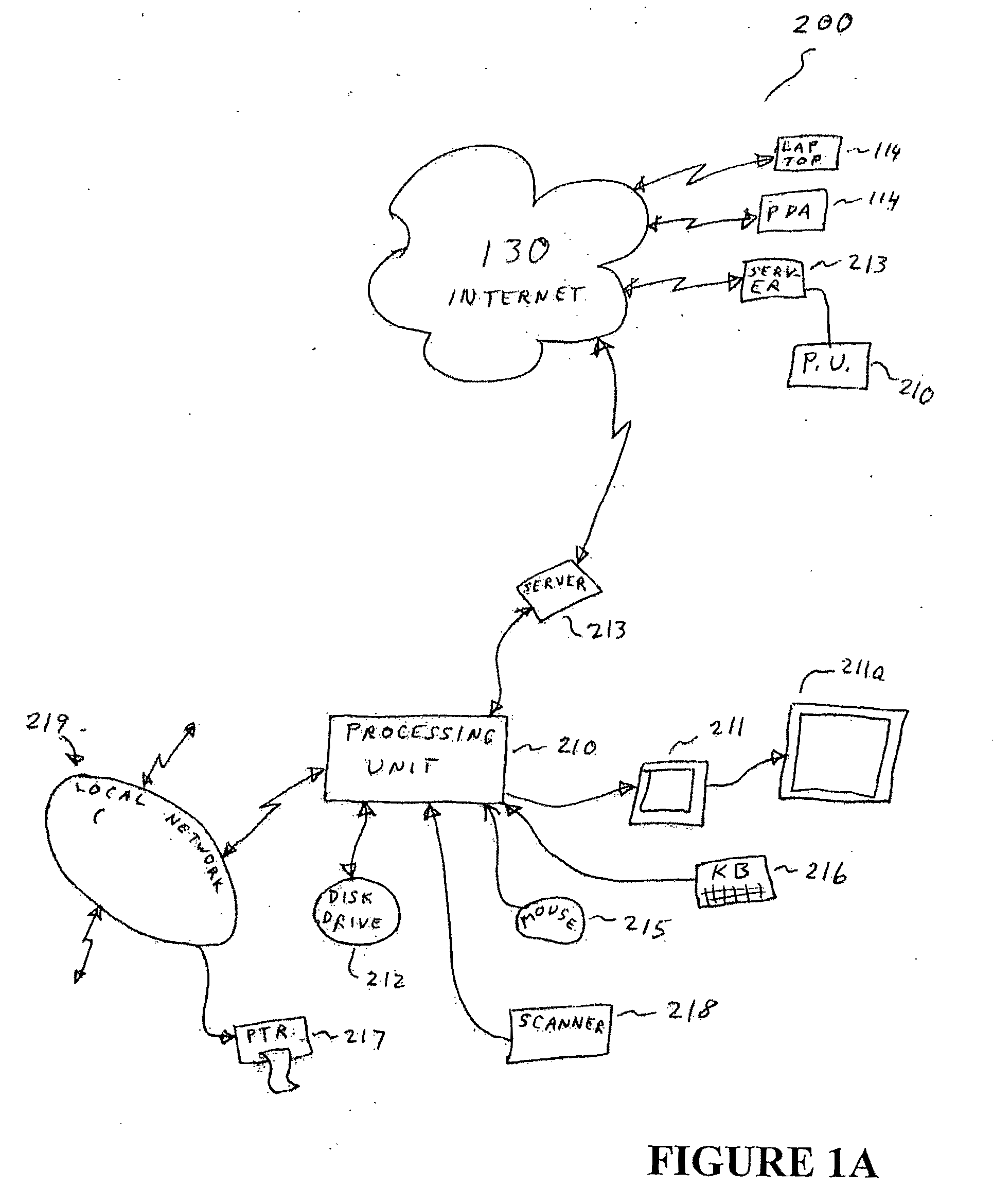Revenue raising auction processes for public goods
a technology of public goods and auction processes, applied in the field of revenue raising auction processes for public goods, can solve the problems of private enterprises generally not being able to produce public goods, typically not being able to capture revenues, and being unable to produ
- Summary
- Abstract
- Description
- Claims
- Application Information
AI Technical Summary
Benefits of technology
Problems solved by technology
Method used
Image
Examples
example a
[0087]FIGS. 10A, 10B, 10C and 10D show an example of a test revenue raising auction process for public goods, where the public goods were defined as being related to preservation of sea grass, clams and birds and habitats related thereto.
[0088]In connection therewith, FIG. 10A is a chart of demographics overview and preliminary observations of the test of the revenue raising auction process for public goods of the present invention. FIG. 10B shows tables of results of the test auction of FIG. 10A, where responses were accumulated by the participant bidders choosing either a bundle of revenue for each unit of restoration concerning to preservation of sea grass, clams and birds and habitats related thereto, or a bundle split across all types of designated public goods concerning to preservation of sea grass, clams and birds and habitats related thereto. FIGS. 10C and 10D are graphs showing the tabulation of the test results accumulated in FIG. 10B for the test auction of FIG. 10A.
example b
[0089]FIGS. 11A-11PP are portions of data input questionnaires and instructions to bidders participating in an experiment designed as an exemplary test of the revenue raising auction process for public goods of the present invention, where the public goods were defined as bundles of increments of purchased value relating to restoration of habitats for birds, clams and sea grass respectively. FIGS. 11A-11U apply to one group of participants in the experiment, and FIGS. 11V-11PP apply to a second group of participants in the experiment,
[0090]FIG. 11A is a sign-in page requiring the signature of a participating bidder experimental test of the revenue raising auction process for public goods.
[0091]FIG. 11B is a sheet of introductory comments and general instructions to participating bidders in the first group of participants at the test auction of FIG. 11A.
[0092]FIG. 11C is an alert to participating bidders alerting them to wait for further instructions from the broker / auctioneer conduc...
example c
[0109]The following is another example of questions to beneficiary bidders as a Public Benefit Auction:
[0110]“For the questions in this section, based on your preferences you will choose between allocating your funds between an environmental restoration activity (or set of restoration activities) and an amount that you can keep for your household's use. In this section, however, each question will ask about your willingness to contribute part of your budget towards different levels of additional restoration of a particular type. Each individual will again be given a personal budget to allocate (or spend) in each choice-question.
“Determining the Outcome:
[0111]Your choice and the choices of the other individuals in your group will determine the level of each action influencing restoration activities and ecosystem services. This means that the project coordinator will look at the decisions of the entire group to determine the how much restoration will be provided, if any. If one of the...
PUM
 Login to View More
Login to View More Abstract
Description
Claims
Application Information
 Login to View More
Login to View More - R&D
- Intellectual Property
- Life Sciences
- Materials
- Tech Scout
- Unparalleled Data Quality
- Higher Quality Content
- 60% Fewer Hallucinations
Browse by: Latest US Patents, China's latest patents, Technical Efficacy Thesaurus, Application Domain, Technology Topic, Popular Technical Reports.
© 2025 PatSnap. All rights reserved.Legal|Privacy policy|Modern Slavery Act Transparency Statement|Sitemap|About US| Contact US: help@patsnap.com



